Table of Contents
What could be better than perfectly cooked, flaky and tender salmon? If you want to create this, then the best way to do it is with sous vide cooking. The good news is that it is very easy to do. It is very unlikely that you will overcook your salmon and you will be able to cook the fish quickly. All you need is a sous vide machine and the best sous vide salmon recipe!
Cooking your salmon sous vide will take a bit longer than conventional methods, but it is well worth the wait. You will never get the same results with traditional cooking that you can with sous vide. Your salmon will be cooked at a precise temperature, and your fish will be a lot tenderer. Your salmon will be cooked evenly, and all of the juices of the fish will be maintained.
I have to be completely honest with you guys, the best salmon I have ever made came from my Sous Vide. Try it out, you will not be disappointed!
Equipment
- Sous Vide Machine – our favorite right now is the Anova or the Joule.
- Container – not necessary, but nice to have for bigger cuts of meat. We recommend the Lipavi as it is large and sturdy. You can also use a pot.
- Vacuum sealer and bags, or a freezer Ziploc bag. If you only have a Ziploc make sure to check our our article on the water displacement method. You can find our favorite vacuum sealers here – 5 Best Sous Vide Vacuum Sealers (Reviews Updated 2021)
Sous Vide Salmon Preparation
If you have cooked salmon using traditional methods, you probably will have noticed a white curd is discharged. This is called albumin, and this is very likely to be pushed out if the salmon is poached, smoked or canned.
Dry Brine
If you brine your salmon then you will reduce the chances of the albumin being excreted. My preferred method is a dry brine.
A dry brine is simply coating your salmon with salt. If you would like, you can also add some sugar to give it some sweetness. If using sugar the ratio should be 4 parts salt to 1 part sugar.
I typically will dry brine it for around 15-20 minutes. After which I will rinse off the salt and sugar and pat dry before placing the salmon in the sous vide bag.
Brining your salmon is highly recommended as not only does it stop the albumen leaving your fish, it also seasons your salmon, so there is no need to add additional seasoning. The brine will also protect your salmon fillet from overcooking.
Cooking Your Salmon
You will find various suggestions on how to cook your sous vide salmon. The important things here are the temperature and amount of time that you cook for. You will need to make your own decision on the temperature depending on your own tastes.
Sous Vide Salmon Cooking Times and Temperature
After several cooking attempts at different temperatures and times, we would recommend the following cooking temperatures and times:
If you like your salmon tender then set your cooking temperature to 104°F (40°C). Cook the salmon sous vide for 40 minutes. If you want tender and flaky salmon (which is highly recommended), then your cooking temperature needs to be set to 122°F (50°C) and again you will need to cook for 40 minutes. For a well done salmon fillet, the cooking temperature needs to be 140°F (60°C) and the cooking time the same at 40 minutes.
Most types of fish can be cooked to a flaky and tender consistency at 122°F. It is possible to cook a number of pieces of salmon in the same sealed bag, but you will need to cut into portions before cooking as you will not get an even cook with a whole fish.
For the best results, use fillets that are around 1.5 inches thick. You can cook thinner pieces, and you will need to cook these for around 30 minutes instead of 40 minutes. If your salmon is thicker than 1.5 inches then add a few minutes to the cooking time. There is no reason why you cannot check on your fish while it is cooking, and place it back in the water if it is not cooked enough.
If you exceed the 40 minutes recommended cooking time it is unlikely to have much of an effect on your salmon. If you want, you can cook your salmon for an hour and still achieve great results.
To cook your salmon, set the temperature on your sous vide machine and wait until the water has reached the desired temperature. Then add your salmon filet and set your desired time.
After your salmon has cooked sous vide, you can use a skillet for searing with a torch to achieve the best results. A few minutes before your sous vide salmon is finished, heat a skillet with a couple of tablespoons of olive oil.
Take the salmon fillets out of the sous vide bags and add each fillet to the skillet. Use a high heat and go for searing at around 45 seconds each side. Make sure that you do both sides. Immediately serve and eat. Don’t leave the salmon in the skillet or on the plates for too long, as the juices will be lost and the fish will become dry.
Keep in mind, searing is actually optional. Some people prefer their fish with a softer consistency so in that case you can skip searing the salmon.
If you are not a fan of crispy salmon, you can remove the skin before you cook your fillets. You will not need any searing in this situation, and you can serve the fillets straight out of the water oven.
Best Sous Vide Salmon Recipe
Here is the recipe to create a fresh salmon seared on butter and olive oil.
I sometimes will marinade my salmon as well within the Sous Vide. I have included my favorite marinade as well.
Ingredients:
- Salmon fillets
- Table/kosher salt
- Citrus zest (optional)
- 3 tbsp olive oil
- 1 tbsp Butter
- 2 cloves Garlic
Optional – Marinade Ingredients:
- 1/4 Cup Maple Syrup
- 2 Tablespoons Soy Sauce
- 1 Tbsp Minced Garlic
- Black Pepper
Directions:
- Prepare your fillets by removing its pin bones if it still has bones. Use tweezers or needle-nose pliers toeffectively remove the unwanted element. You should have dry brined it beforehand to keep its tenderness after cooking. You may do so by dry brining it as I describe above in the beginning of the article.
- Rinse off the brine from the fish, place in the bag and submerge the sealed vacuum bag in the preheated water. You may want to use vacuum sealers that are effective in removing unnecessary air in the bag. Some reviews online will insist that a ziplock bag will be enough to produce a quality fish meat. However, that will not always be the case. Some bags and vacuum containers can process meat and fish that retains its integrity even after being submerged in the water.
- For our purposes, the water should be heated to 120°F or 49°C to keep the fish flaky without having to remove much of its natural moisture. Maintain the temperature effectively with the use of sous vide machines such as immersion circulators and precision cookers. Make sure that this appliance will provide you with maximum aid and autonomy in controlling the temperature, as cooking fish meats such as salmon with the use of sous vide method can prove to be extremely difficult without the proper control.
- After the predetermined time, remove the fish from the bag. Extreme care is needed to maintain the integrity of the meat. The fish by then have become more flaky and delicate, and without the proper care, some flakes will fall off or be left behind.
- When proceeding with the searing, heating the meat over a pan with olive oil and some butter for about 30 seconds each side will produce a nice, golden brown finish on the surface of the meat.
If Using Marinade:
- Mix marinade ingredients together and pour in to the Sous Vide bag with the Salmon.
- Let rest for 20-30 minutes.
- Place the Sous Vide bag with salmon and marinade in to the cooking container and follow all the same steps outlined above.
Different Salmon Will Produce Different Cooking Results
Tests have proven that when you cook different types of salmon you will get different results. They should all taste great, but the textures and flavors will be different. When you cook a Norwegian salmon for example, you will find that it will be very delicate to handle after cooking. This can make it difficult when it comes to searing. The taste will be excellent though so persevere with this. With a wild Coho salmon it should come out a lot firmer after sous vide cooking and the searing will be easy.

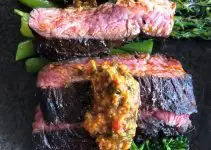
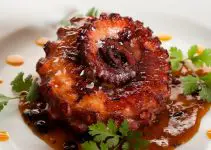
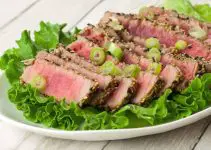
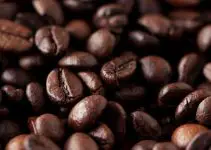

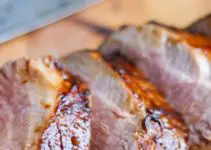
why do you say we should wait until the water is at the target temperature before adding the fish? Surely it won’t start cooking until the water reaches the temperature? I’m concerned because I want to put the food in a long time before starting the cooker remotely
Hi Andrew,
In reality, it doesn’t really matter. Naturally, if the fish is in the sous vide while it’s heating up, then it is cooking; albeit not very thoroughly. Sometimes this can impact the texture ever so slightly. But you’re right, it’s usually not a problem. I put that caveat in there since some people are very particular on the texture of their fish.
So what else is on the salmon in the pic? I see sesame seeds and chives but what the brown liquid?
I’m cooking a Steelhead trout. And planning to use a torch to sear it. Any hints?
Haven’t cooked one before, sorry!